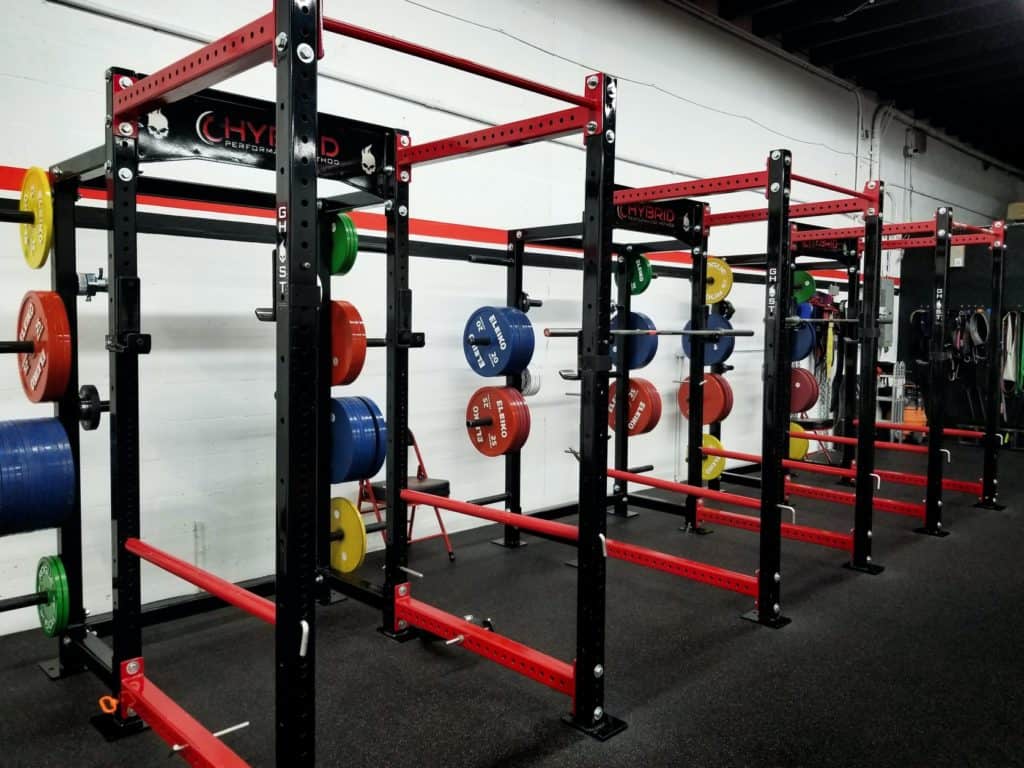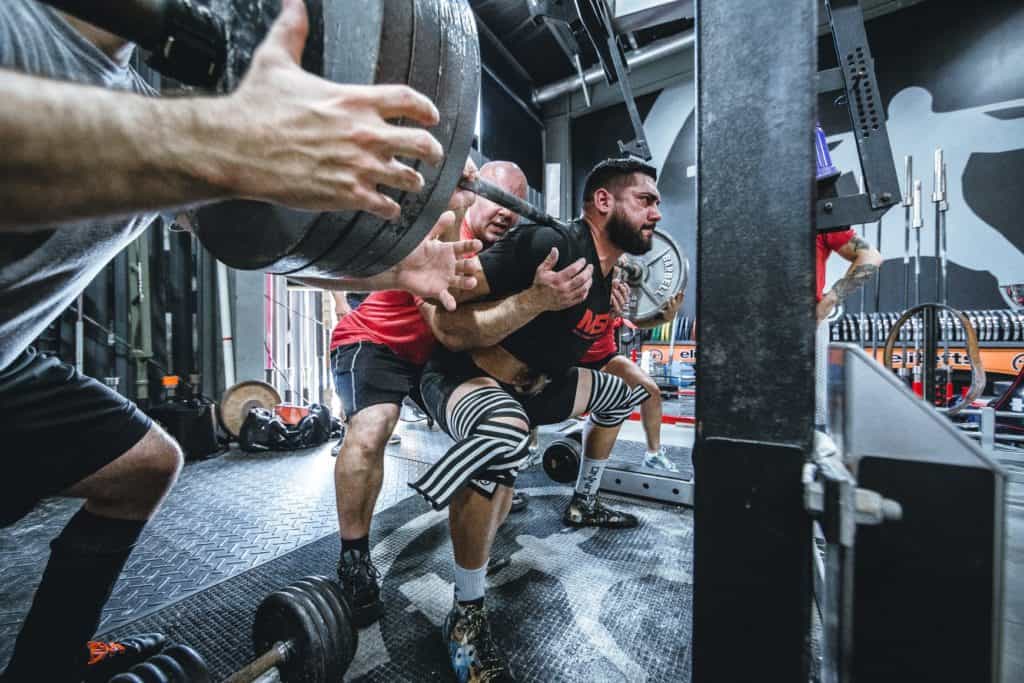
Strength and conditioning is a major part of any modern athlete’s overall training routine for sport. A greater emphasis has been placed on strength and conditioning in recent time, particularly as older myths like lifting weights makes you stiff have been debunked.
However, there has to be a balance between skill work and strength and conditioning. An athlete can’t sacrifice technique and timing while focusing solely on strength training. At the same time, you don’t want to completely negate things like weightlifting and plyometric work as they serve an important benefit.
This is especially true today. College and professional athletes in particular treat the game as a year round sport. You can’t get lazy in the offseason when the level of competition is elite. The best athletes have their own personal strength coaches, nutritionists, massage therapists, etc.
The amount of strength and conditioning an athlete should perform is based on what stage of the season they are in. In the offseason, an athlete can perform strength and conditioning 5x per week, pre season 3x per week, and during the season 1-2x per week.
Not only does workout frequency change based on the stage of the season, workout type and length change as well.
Offseason Strength and Conditioning Training
The offseason is an opportunity to make significant strength and hypertrophy (muscle mass) gains. Depending on the sport, the offseason may be upwards of 6-8 months long. During this time, they can train hard in the gym with a great deal of volume.
Volume is a measure of the total work done in a workout. It is typically measured on a weekly basis. More volume results in greater gains, whether in the form of strength or lean muscle.
However more workout volume can result in more soreness as well. In the offseason this isn’t a concern. But during the season an athlete can’t be sore leading into games or competition. Even in the pre-season, an athlete shouldn’t be exceptionally sore heading into practice or training camp.
If an NFL or college football player is sore in March or April, it’s no big deal. Their primary concern is improving strength and conditioning at this point of the year.
During the offseason, an athlete can focus on more general strength and conditioning goals, rather than specifics. In other words, if the goal is to get stronger, they can focus on basic compound lifts like squats, deadlifts, and military press. At this stage, sport specific training isn’t as important since the season is months away.
It takes time to build considerable strength and hypertrophy, which is part of the reason these workout goals are reserved for the offseason. How much strength could you conceivably gain in a one month pre-season? Not much, which is why you need a longer time frame to structure a proper workout program to see tangible results.

Pre-Season and In-Season Strength and Conditioning
As the athlete approaches the season, workouts will become shorter and more specific to the sport itself. From a strength perspective, the goal is simply to maintain the progress made in the offseason.
In the pre-season, the athlete makes a greater shift toward cardiovascular training relative to the sport, also known as conditioning. This includes plyometric exercises like sprints, box jumps, and lateral drills. There is still weightlifting involved, just less of it.
By shortening the workouts and decreasing the volume, there is less risk of soreness. Soreness can negatively impact performance on the field.
Make no mistake, the workouts are still intense. However, since they are more conditioning based, it serves two functions. It gets the athlete in better cardiovascular shape for competition, and keeps soreness at a minimum.
While on the surface strength and conditioning seems 100% physical, there are important neural adaptations that occur as well. These conditioning drills help improve reaction time, change of direction, and decision making.
Every muscle movement starts in the brain. The brain sends a signal to the muscle to react and fire. Over time this signal becomes more efficient. Think about a wide receiver who runs a route, turns to face to quarterback, and immediately puts his hands up in anticipation of the throw.
He’s performed this movement with such repetition and precision that it’s almost automatic. Strength and conditioning work supplements these actions in unique ways, by utilizing weights, bands and sleds to mimic these same movements
There is typically a decrease in frequency between pre-season and in-season training. In-season training is less frequent, and sometimes less structured depending on the sport. A sport like basketball may have parts of the season where a team is on a road trip or has back-to-back games. Naturally, adjustments have to be made to the training schedule to accommodate for this.
A sport like football, which has just one game per week every week, allows for easier strength and conditioning programming. Individual sports like tennis, golf, and combat sports also allow for this, since the athlete can pick and choose what competitions they take part in.
Macrocycles, Mesocycles, and Microcycles of Strength and Conditioning
Periodization is a program design strategy that allows someone to continually make progress without plateauing. As you train, the body adapts to the routine, which results in strength, size, or athleticism gains.
Unfortunately, what eventually happens is that the gains don’t come as quickly and progress slows or stops completely. A strength and conditioning program following proper periodization cycles minimizes this effect and keeps the progress coming.
Strength and conditioning programs are broken up in macrocycles, mesocycles, and microcycles. A macrocycle makes up the time period of the entire program. This is typically 6 months to a year for most athletes, but for an Olympic athlete it can be up to 4 years (since the Olympics occur every 4 years).
The macrocycle is broken up into smaller mesocycles. A mesocycle is usually a few months long, and focuses on one or two specific training goals.
Within the mesocycle are microcycles. Microcycles can be a few days to a few weeks long, and focus on specific training variations.
Within a strength and conditioning program may be periods of deloading. Deloading occurs when you intentionally decrease training volume or weight to improve recovery. These deloading periods ensure that long term progress occurs and protect against potential overtraining. Sometimes deloading periods are built into a program, and other times they are adlibbed between the athlete and coach based on how the athlete is feeling.
Pro Athlete Strength and Conditioning Schedule
The following is an example of an athlete’s strength and conditioning training schedule, broken down by the stage of the season, workout type, and frequency.
| Stage of Season | Training Schedule | Training Goals | Workout Volume |
|---|---|---|---|
| Offseason | Mon: Push (Chest, Triceps, Shoulders) Tue: Pull (Back, Biceps) Wed: Off Thu: Legs and Core Fri: Upper Body Sat: Off Sun: Legs and Core | Increase Strength Add 5lbs of Lean Mass | High |
| Pre-Season | Mon: Push Tue: Off Wed: Pull Thu: Off Fri: Legs Sat: Off Sun: Off | Maintain Strength and Mass Gains Improve Conditioning Introduce Sport Specific Training (i.e. battle ropes on push days, rower on pull days, explosive squats on leg days) | Moderate |
| In-Season | 1-2 sessions per week, ideally a few days before and not immediately after games | Maintain All Facets of Strength and Conditioning | Low, But Still High Intensity |
Summary
Strength and conditioning training is not an all-or-nothing phenomenon. It must be tailored to not only the athlete but the stage of the season or competition.
The offseason is the athlete’s best opportunity to make significant progress in a specific aspect of training. The offseason is a long period time that can be devoted to this training goal, and the one time that skill work can be looked at as secondary. Common offseason goals include making significant strength and size gains.
As the athlete approaches the season, workouts will become shorter and more intense. This allows the athlete to improve cardiovascular endurance, maintain offseason gains, reduce soreness, and free up time for skill work and practice.
Recent Posts
Stretching Before Workouts: Essential Warmup or Performance Killer
“Don’t stretch before workouts, your muscles become too supple” “Stretch before your workouts, warming up is important” It's conflicting advice like this that drives people crazy,...
Best Protein Bar For the Money | Cost Effective, High Quality
Protein bars are no longer a supplement dedicated to diehard gym rats, with awful taste and the consistency of a brick. Men, women, and even teenagers can commonly be seen eating protein bars. The...
